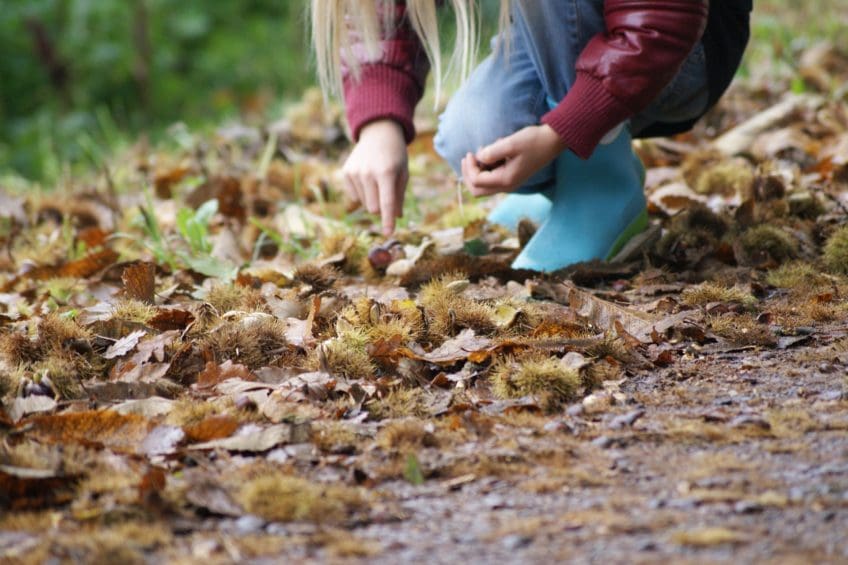Feast or Forage: Diets Then and Now
Our focus on locally sourced foods and produce got me thinking about our past style of hunting and gathering to obtain food. Thousands of years ago, before agricultural development and domestication of animals, our ancestors would strategically hunt and gather plants and animals to survive. As modernization of how we catch and manipulate our food has accelerated, the degree of food groups, additives and processed items in our diet has exponentially increased. After reading the Evolutionary Eating blog post on the Today’s Dietitian webpage, it seems there is increasing evidence that one’s diet could be an environmental trigger to disease states that are common today (especially autoimmune disorders) in genetically vulnerable individuals.
In the current digital modern age, we strive to keep up with constant change, while being surrounded by easy-to-access, highly-processed, energy-dense foods. Unfortunately, I have found that we often neglect our own self-care. Usually the words “I just don’t have time” go along with a struggle to keep up with a fast paced lifestyle. This can lead to a mental state where eating processed meals on a daily basis appears to be a good idea. The end outcome is not that of long-term health and high quality of life, to say the least.
Perfect Pain Formula:
Unrealistic set of expectations of self + Lack of self-care + High mental/emotional/physical stress = Sickness
So, what can we learn from our ancestors? Well let’s take a look at the differences between now and then:
| Now | Then |
| High glycemic, high carbohydrate foods | Lower glycemic, higher protein foods |
| Low fibre foods, highly processed grains | High fibre vegetables and fruit |
| High sodium, low potassium foods | Low sodium, high potassium foods |
| More preservatives, refined sugars, and chemicals | More vitamins, minerals and antioxidants |
| High calorie dense foods available within minutes requiring no exercise or substantial movement to obtain a meal | Nutrient rich whole foods gathered, stored and cooked, requiring time, energy and movement to obtain a meal |
Slow and Steady Success Formula:
Realistic expectations + Self care (planned movement + whole food fuel etc.) + Stress management = Health
It is not realistic to recommend that we all learn how to hunt and gather to obtain whole foods. However, after doing more research into plant foraging in North America, I discovered that countless species of edible roots, weeds and other foliage flourish in the prairies and forest lands of Alberta! I decided to set out on a small foraging expedition of my own to see what edible foliage I could uncover at my family’s farm just outside of Edmonton. Below are some of the edible plants I found.
Foraging Guidelines
Note: If you plan on trying out your own foraging voyage in the wilderness, be sure to invest in a quality guide book complete with pictures and descriptions of plant species that are edible and those to avoid. Be sure that the plants you are gathering are edible and not poisonous before popping them in your mouth. Avoid plants that grow in heavily fertilized or polluted areas.
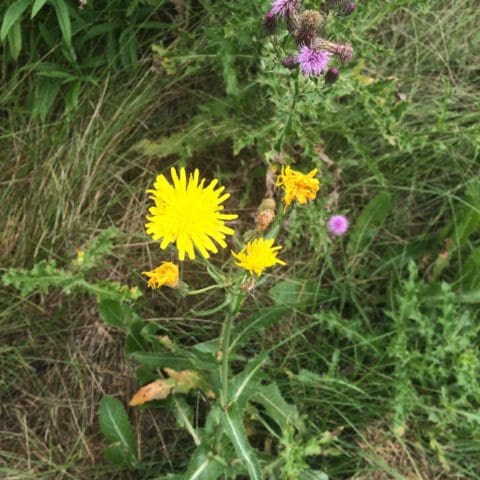 Dandelion
Dandelion
Description: Distributed globally and found as a common lawn and field weed. The young leaves of the dandelion should be eaten raw in salads or side dishes before they become too bitter. The larger leaves and roots can be sautéed in oil or a little butter. The blowing yellow flowers go well in salads, adding a pop of color, flavor and texture!
Nutrition: Dandelion greens are an excellent source of vitamin K, vitamin A, vitamin C, vitamin E and B vitamins (including thiamine, riboflavin, and vitamin B6). These nutrient packed leafy greens are also a good source of calcium and iron!
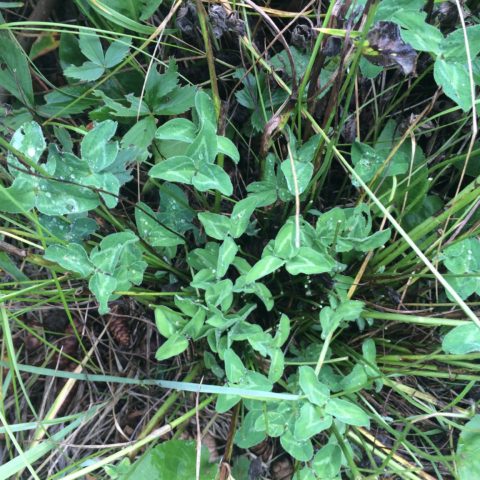 Clover
Clover
Description: Distributed globally and found in open fields from spring through fall. Clovers can be eaten raw or cooked and make a great addition to a mixed green salad!
Nutrition: Clovers contain potassium, zinc, magnesium and are a good source of vitamin k and manganese.
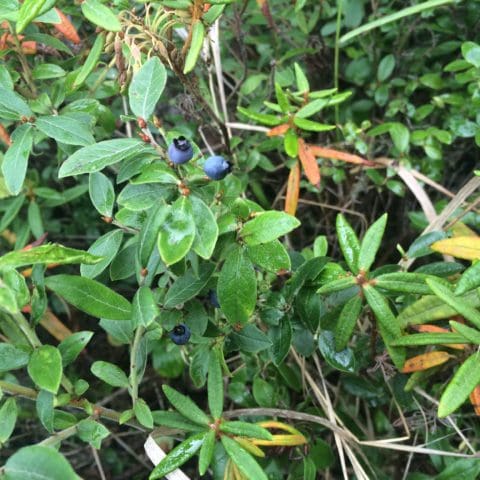 Blueberries
Blueberries
Description: Distributed in the Northern Hemisphere in the summer months. Blueberries can be eaten raw or dried as a snack, added into baked goods, smoothies and salads.
Nutrition: Blueberries are an excellent source of antioxidants and phytonutrients that help to protect body cells against damage (i.e. protect eye sight, heart health, memory, and promote anticancer effects). Blueberries are an excellent source of vitamin K, vitamin C and fibre!
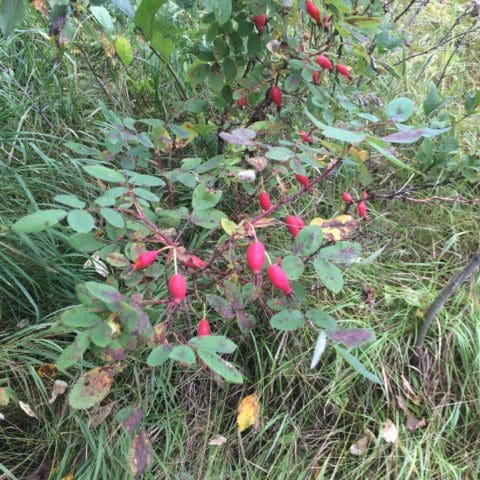 Multiflora Rose (Rose Hips)
Multiflora Rose (Rose Hips)
Description: Distributed in the Northern Hemisphere, available in summer and fall seasons. You can steep the entire rose hip including the flesh and seeds to make tea. Rose hips are ready to eat in late fall. You can eat the flesh of the rose in salad, baked into bread or boiled to make jam or jelly. You can also preserve this fruit by cutting it in half and removing the seeds to let the flesh dry. Use them like dried fruit as a snack later!
Nutrition: Rose hips are an excellent source of vitamin C containing more than an orange or lemon! They are also high in vitamin A, vitamin K, vitamin E and are a source of calcium!
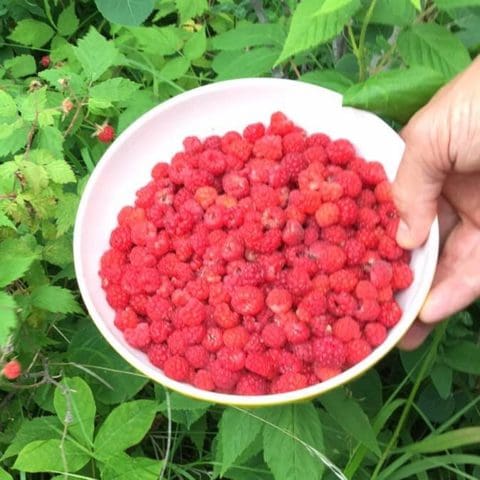 Raspberries
Raspberries
Description: Distributed in the northern hemisphere and found during the summer months, raspberries can be eaten raw as a juicy snack or sprinkled into muffins, pancakes or oatmeal for breakfast. They make a wonderful sweet and tart addition to fruit salads or baked pies as well! Raspberry leaves can also be dried and used as tea.
Nutrition: Raspberries are a potent source of antioxidants and have anti-inflammation properties. The anti-oxidative effects may help to decrease cancer cell formation and reduce risk for chronic diseases like diabetes, high blood pressure and atherosclerosis. Raspberries are particularly high in vitamin C, vitamin K and manganese.
Cattail
Description: Distributed globally and is found in lowland areas and drainages. There are many edible parts of the plant including the pollen, unopened greenish yellow flower spikes (find them before they become covered with pollen), young cattail stems. Use the starchy roots later in the fall and winter months. The unopened flower spikes can be peeled and boiled till tender. When the pollen starts forming into thick golden substance it can be enjoyed as a higher protein food. The tender white flesh of young cattail stems can be eaten raw or cooked!
Nutrition: The cattail tender leaf shoots provide an excellent source of manganese and vitamin K. They are also a good source of vitamin B6, calcium and magnesium!
References:
- Article: Evolutionary Eating — What We Can Learn From Our Primitive Past by Juliann Schaeffer
- Book: How to Eat in the Woods by Bradford Angier
- Book: Hunting & Gathering Survival Manual: 221 Primitive & Wilderness Survival Skills by Tim Macwelch and The Editors of Outdoor Life

